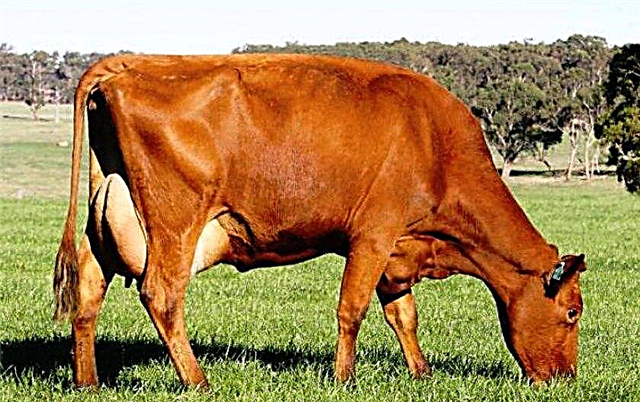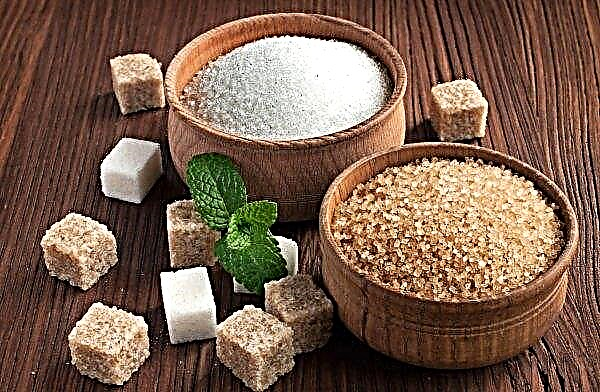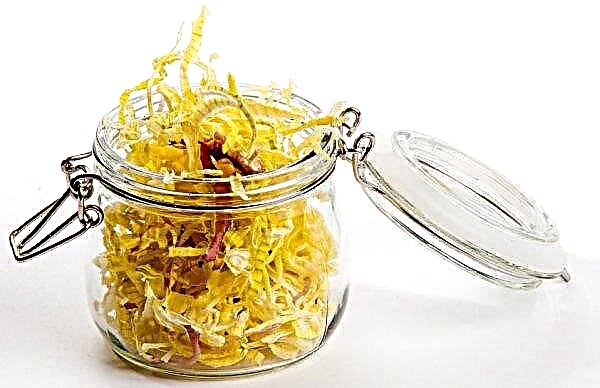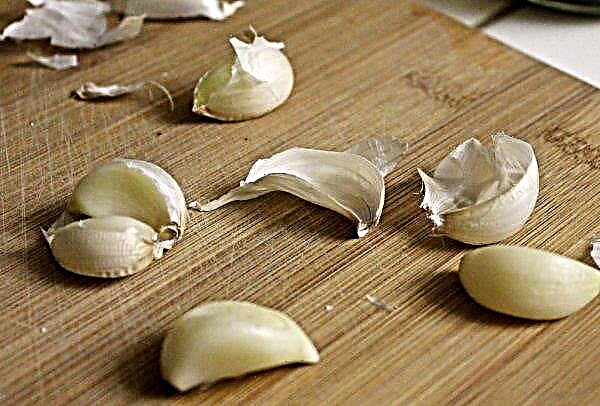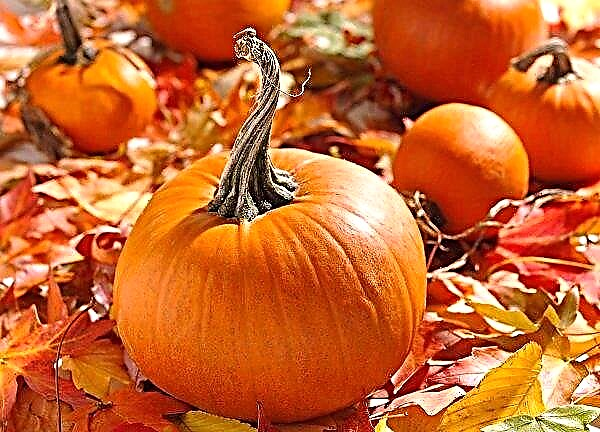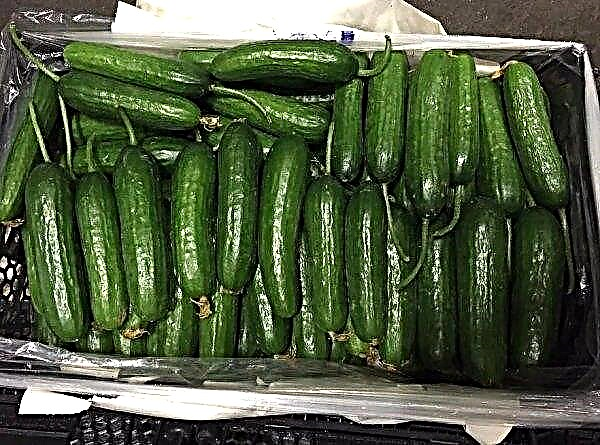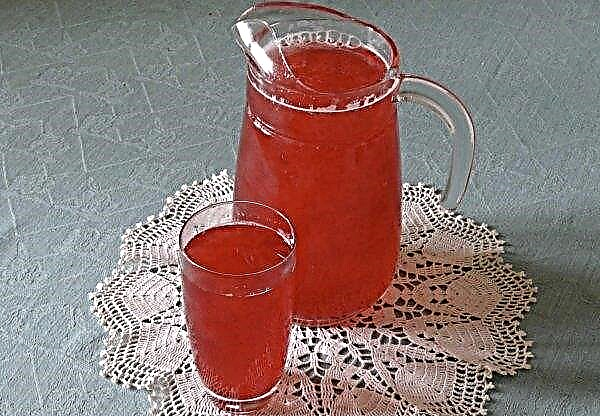The use of wax greatly simplifies the work of the beekeeper and allows you to provide a bee swarm with a comfortable existence. Below, its features and the method of self-manufacturing are discussed.
What is a wax?
A wax is called a plate of beeswax, on which figures have already been extruded for the accelerated development of honeycombs in the hive. In natural conditions, bees make honeycombs on their own and spend a lot of time and energy on it.
By installing the finished wax plate in the hive, you can achieve the following goals:
- expand the bee's nest;
- increase family productivity;
- ensure optimal swarm formation in spring.
Did you know? One honeycomb consists of approximately 100 thousand particles of pollen. The new honeycombs are white, but the bees immediately polish them with propolis, which gives a yellowish tint.
What is a wax made of?
Insects build cells from honey and flower pollen. For the production of wax in beekeeping, both natural and artificial materials are used. Finished plates can be bought in specialized stores or exchanged for wax.
From natural materials
The optimal natural material is pure white wax, whose distinguishing feature is the absence of sediment after free melting.

- The advantages of wax honeycombs can be called:
- environmental safety;
- convenient use;
- processing comfort due to low melting point.
Made of artificial materials
The plate can also be made of paraffin or plastic.
- The advantages of these materials are as follows:
- long term of use (up to 10 years);
- easy installation in prepared frames;
- less prone to deformation (compared to wax);
- simple storage.
Did you know? Bees remember the position of the hive relative to trees and buildings. If you move the hive, the returning bees will look for it in the old place.
- An artificial plate also has several disadvantages:
- mandatory antiparasitic treatment (at least three times a season);
- applying an additional layer of wax before installation;
- cannot be repaired in case of damage.
The interaction of the bee family with plastic materials has not been sufficiently studied.
How to choose a quality wax from the manufacturer?
The choice of quality wax for the hive is the key to the health and high productivity of bees.

The main criteria for a successful purchase are as follows:
- transparency of the selected plate;
- lack of foreign inclusions and pollution;
- the optimal plate size is 41 × 26 cm (or 41 × 19 cm for a multi-hive hive);
- the same size between the parallel sides of the cells (from 5.3 to 5.45 mm).
The location and number of cells is associated with the characteristics of a particular species of bees. So, Asian bees need smaller recesses than European and African ones, but the number of honeycombs themselves is greater for them.
How to make wax with your own hands?
In industrial conditions, waxing is done on special machines, passing the molten filtered wax through the rollers on a rotating drum. You can also make plates yourself at home, following the recommendations below.
What equipment is needed?
For work, you need hand rollers or an electric press. Rollers allow you to get more wax in a short time, and the press is a simpler and more economical solution for a small apiary.
Homemade matrix for the press can be made of silicone or epoxy resin, which is applied to the factory sheet with the desired relief. The machine with rollers can be either manual or automatic. Rollers should also have a relief that is made by turning. It is advisable to use equipment with a cooling function.
Important! The design of the press should include a compartment for excess hot wax.
Training
Before working with the press, it is necessary to prepare the material used.
The necessary sequence of actions is as follows:
- To clean the wax from impurities, it is boiled several times (at least 3) in a container with an enamel coating.
- After that, check the humidity and if it is above 2%, the mixture is evaporated over low heat.
Manufacture
After preparing the wax, they begin to make the wax itself, for which they perform the following steps:
- The wax is melted in a water bath, and then poured into a flat container with a layer of up to 0.5 cm, obtaining a wax sheet.
- Before work, the rollers must be cooled.
- The finished sheet is kneaded and shaped, scrolling through the rollers.
- The plates are dried under room conditions.
Important! The temperature of the molten wax should not exceed the recommended temperature limit for the material used for the matrix!
When using the press, the following actions are necessary:
- The press plates are preheated by immersing them in warm water (about + 50 ° C) for an hour.
- First, the bottom plate is pulled out and the water is allowed to drain.
- Molten wax is poured onto the bottom plate, trying to do this as evenly as possible. You can also lay out pre-prepared wax sheets that are preheated in warm water until soft.
- Remove the top plate from the water and gently lower the matrix down to the bottom.
- Excess wax will drain into the tank, and residues at the edges of the plates can be removed with a spatula.
- After opening the press, the finished wax sheet on one of the plates is placed under a stream of cold water for uniform solidification.
- The sheet is carefully removed from the plate by the corner and dried.
Video: making wax at home
Methods and features of wax storage
Sheets are stored in dense paper packaging, avoiding exposure to strong odors and moisture. The room temperature should not fall below zero, and should not be too high so that the wax does not melt. Proper storage can increase the strength of waxes by 75%.
Providing a beehive with high-quality wax can significantly increase the productivity of a bee family. Despite the initial costs, making wax with your own hands can save the beekeeper time and help maintain the health of the bees.

